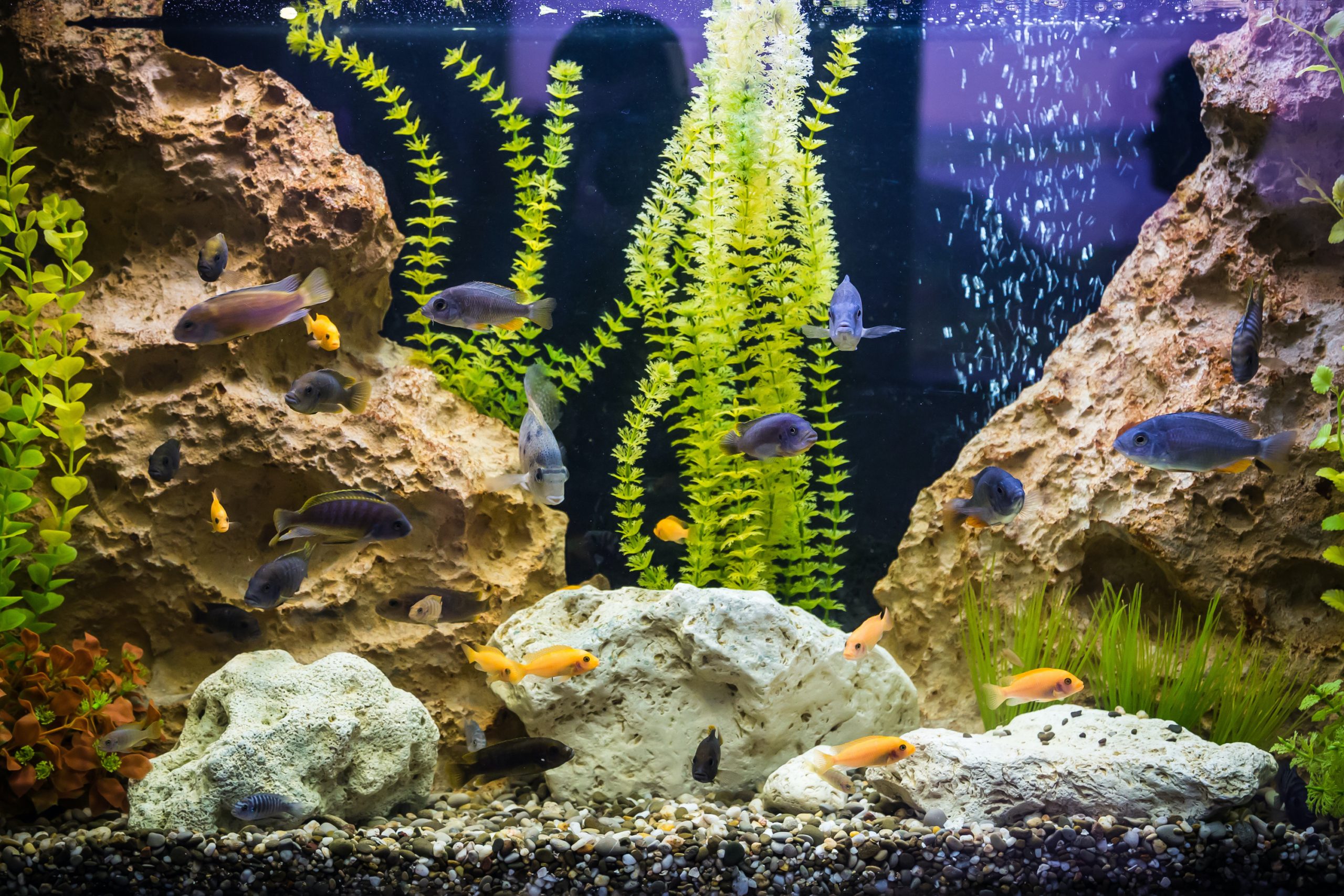One of the most fun parts of caring for pet fish is getting to decorate their aquarium. If you’ve ever seen a show such as Tanked, you’ll know just how customizable an aquarium can be if you’re willing to spend a little time on your project. From backgrounds to plants to decorative lighting, the possibilities really are endless.
Luckily, you don’t need to spend a fortune to create the underwater world of your dreams — you can DIY just about anything you need with a little research and creativity, and since we took care of the research part for you, you’ll need to focus only on finding what you need and making it happen. Give yourself a couple of days to dedicate to your project, and you can have your very own aquatic wonderland by the close of the weekend. Here are eight of our favorite DIY aquarium decorations:
1. DIY simple tank background
One of the simplest yet most effective pieces of tank decor is the background. All you really need is something to tape to the back or sides of the tank, whether it be wrapping paper, a large photo of your favorite tropical landscape, or even just some decorated printer paper. Get creative!
2. Utilize your Legos
No one will appreciate your scale model of the Golden Gate Bridge quite as much as your aquatic friend, who has the chance to get up close and personal with your Lego masterpiece. Not only will it make adorable tank decoration, but it also will give your fish something else to interact with inside their tank — which they’re sure to thank you for (look for some especially peppy swimming)! Since Legos are built with children in mind, they have especially strict safety standards for the plastic they use. They’re safe to use in aquariums and won’t release any kind of toxins into the water.
3. Get creative with lighting
Light is ultraimportant in the health of algae, corals, and even the fish in your aquarium! Depending on the species you have, you can do almost anything with the lighting in your aquarium without bugging anyone in it. Colored lighting is one easy way to do this, as is stringing up festive holiday lights around the tank for an extravibrant look.
4. Flowerpots make great hiding spots
If you’ve got an extra clay or ceramic flowerpot somewhere at home, you can put it to good use in your aquarium. These pots are made of tank-approved materials, and when laid on the side, they make the perfect little cave for your fish to explore and hide in. We all need a little privacy every now and then!
There are fish-safe paints available online if you want to make your decor a little more colorful. Just make sure to do your research first.
5. Turn your tank into a canvas
For this project, all you need is a set of Sharpies or other permanent, glass-staining markers. Grab your pens and doodle away! Yes, directly on the glass! Stencils are always an option if you aren’t a natural Michelangelo, so don’t stress about perfection, either. Use this occasion to have some face time with your aquatic friend, and it won’t even seem like work.
6. Build the landscape of your (fish’s) dreams
For a slightly more dedicated hobbyist with an entire weekend to devote, making your own aquarium landscape out of silicone and insulating foam is a more challenging — and rewarding — project to try. This acts as a permanent tank background, so your hard work will be around to admire for many months. Building your own landscape lets your imagination run wild; you can re-create the Grand Canyon, or you can create an aquatic world all your own!
7. Rocks + fish-safe glue = endless possibilities
Let out your inner sculptor by DIY-ing your own caves, arches, and other rock art for your fish! With just some rocks and aquarium-safe adhesive, such as silicone, you can spend the weekend getting creative and letting your fish explore their tank’s new additions. Be careful to stabilize your creation so it won’t fall over or endanger your fish in any way! It’s also a good idea to sanitize any rocks you might be adding to the tank.
8. Print your own vinyl decals
A vinyl sticker on your aquarium can go a long way, whether you add some dimension with a few or create a whole adhesive background. Owners of craft machines like the Cricut can design and print their own vinyl right at home, though custom-cut vinyl images are often cheap and easy to find online. Since it’ll be on the outside of the tank, you won’t have to worry about the safety of the material in relation to your fish.
Feeling inspired yet? Next time you have a few days to dedicate to a project, consider some DIY aquarium decoration ideas. There are tons of examples online, so you’re sure to find something to get your creative juices flowing. These projects don’t take that long to make, but they’ll last a good while — at least until your next urge to give your fish a tank makeover!





